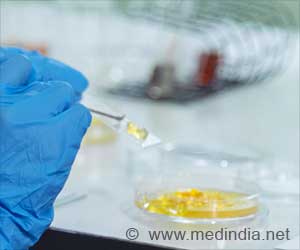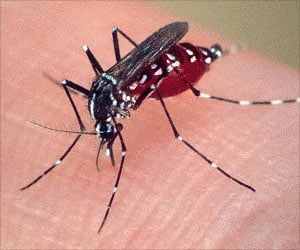The hair-like protrusions of bacteria have a sticky protein on the tip that makes them cling to surfaces. The structure of these protrusions are in the form of a coiled , bungee cord-like structure which helps the bacteria hang on tightly, even through rough fluid flow inside the body, researchers report in the journal PLoS Biology.
A group of researchers at the University of Washington in Seattle and ETH Zurich in Switzerland have been studying how the bacterium E. coli attaches to mucous membranes in the body. In their previous research, they explained how the protrusions, known as fimbriae have an adhesive protein called FimH at their tip that binds in an unusual way to a sugar molecule on a surface.The FimH-sugar combination makes a 'catch bond' that acts like a finger trap, and actually gets stronger as drag force is exerted on a bacterium. Rather than being swept away by fluids moving through the human body, the bacterium grips even more tightly, helping it stick around and form an infection, like those seen in the urinary tract, for instance. The catch bonds release their grip when there is little or no force on the bacteria.
In new research, the scientists have learned that the mechanical properties of the bungee-like fimbriae also play a key role in the tenacity of E. coli clinging to mucousal surfaces. The tiny fiber-like protrusions are made up of interlocking protein segments in a tightly coiled helix shape, like a seven-nanometer-wide Slinky toy. The researchers found that under force, the fimbriae stretch to many times their original length as the protein segments uncoil one by one. If the force on them drops, the fimbriae coils are compressed, keeping tension on the bond between the bacterium and the mucous membrane.
'The fimbriae uncoil and recoil to dampen sudden changes in forces caused by rough and rapidly changing flow conditions,' explained study co-author Dr. Viola Vogel, professor in the Department of Materials at ETH Zurich. This process maintains an optimal force required to keep the finger trap-like FimH anchor from breaking loose.
'This system is similar to a set of shock absorbers on your car that dampen turbulent forces caused by bumpy road conditions,' added study co-author Dr. Wendy Thomas, assistant professor of bioengineering at the UW.
The researchers found that fimbrial uncoiling and recoiling events balance each other at an intermediate force level that corresponds to the force at which the sticky protein tip forms the most stable bond with the surface. Thus, the mechanical and adhesive features of the system evolved together to help the bacteria persist in tough environments inside a host animal or person.
Advertisement
Source-Eurekalert
SRM








